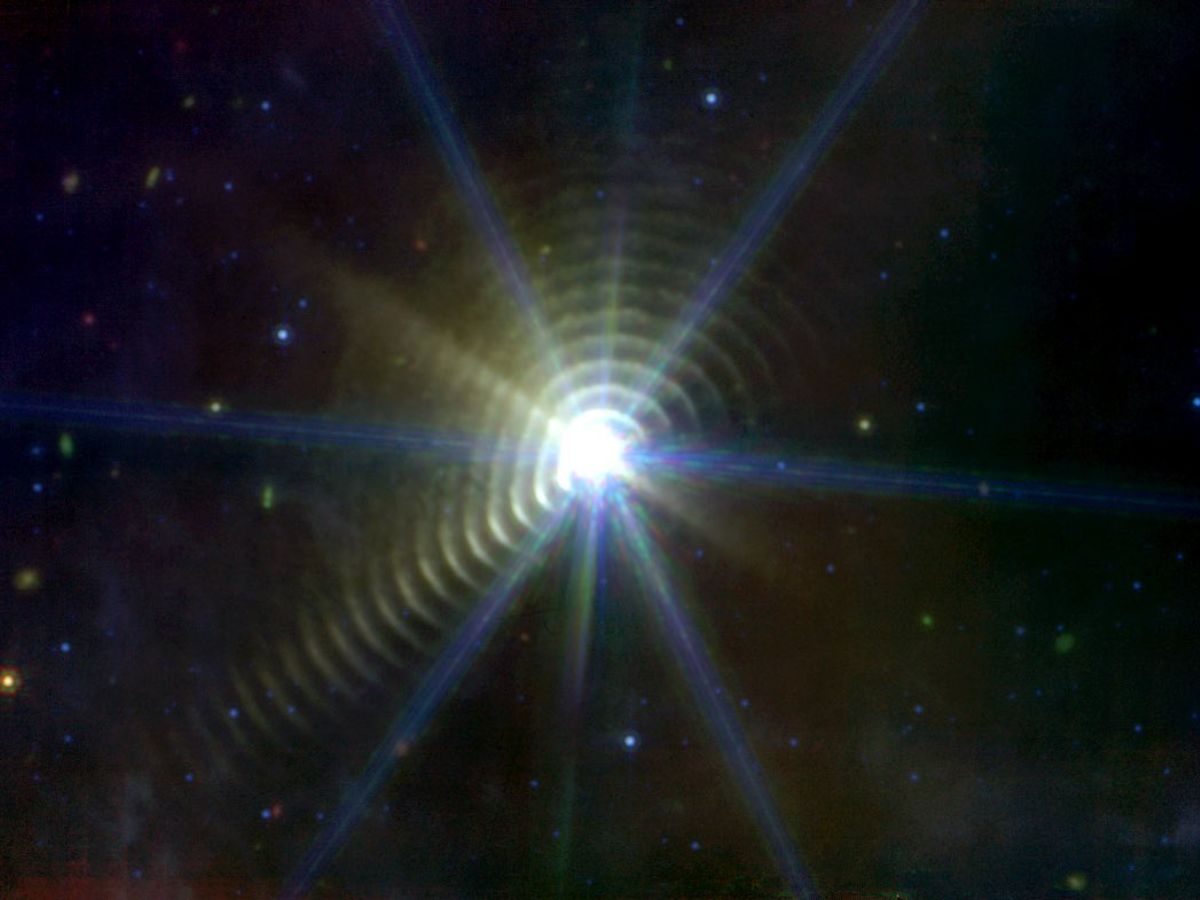Astronomers Bewildered By Mysterious Rings In New James Webb Space Telescope Image
Webb captured the image in July. Citizen scientist Judy Schmidt recently released the image on Twitter. The image is that of a star named WR140, surrounded by regular ripple-like circles.

NASA's James Webb Space Telescope (JWST) has imaged mysterious concentric rings around a distant star. Astronomers are bewildered by these rings, and are trying to figure out what they mean.
Webb captured the image in July. Citizen scientist Judy Schmidt recently released the image on Twitter. The image is that of a star named WR140, surrounded by regular ripple-like circles. According to a report by space.com, the circles gradually fade away, and are not perfectly round. Square-like structures can be seen in the image.
Nope, I don't know what this is. Some kind of spiral nebula around WR140. I'm sure we'll find out more later.
— Judy Schmidt (@SpaceGeck) August 29, 2022
h/t to @yuvharpaz & @JWSTPhotoBot pic.twitter.com/ukenoIXrnj
What Does The Image Mean?
Mark McCaughrean, an interdisciplinary scientist in the James Webb Space Telescope Science Working Group and a science advisor to the European Space Agency (ESA) called the image "bonkers", in a Twitter thread, and said the six-pointed blue structure is an artefact due to the optical diffraction from the bright star in the Webb MIRI (Mid-Infrared Instrument) image. He explained that the "red curvy-yet-boxy stuff" is real, a series of shells around WR140, and are actually present in space.
Well that’s bonkers 😬
— Mark McCaughrean (@markmccaughrean) August 29, 2022
The six-pointed blue structure is an artefact due to optical diffraction from the bright star WR140 in this #JWST MIRI image.
But red curvy-yet-boxy stuff is real, a series of shells around WR140.
Actually in space. Around a star.
HT @spacegeck 👍 https://t.co/6TLjfErL37
McCaughrean wrote in the same thread that a similar image from the MIRI data already features on the Wikipedia page for WR140. He said the image was made by citizen scientist Melina Thévenot.

McCaughrean also explained the probable reason behind the crazy shell structure. He said that Wolf-Rayet stars like WR140 are evolved massive stars which have ejected most of their hydrogen envelopes and are fusing helium or have stopped altogether. These stars are very luminous and have huge amounts of dust around them.
The scientist explained that in the case of WR140, the dust is being sculpted by dynamical interactions with another star orbiting it. WR112 is a similar system which is surrounded by spiral shells.
He said that the exact geometry of WR140 is not "immediately obvious" to him, and that he cannot tell why the curved-yet-boxy shells are discrete and separated, rather than a spiral structure.
The MIRI image has a resolution of approximately 1000 × 1000.
Replying to McCaughrean, Ryan Lau, Assistant Astronomer at National Science Foundation's (NSF) NOIRLab, said it is great to see all of the excitement on this, and that the nested "squircular" rings are real. He also wrote that a paper on this has been submitted. The paper is currently under review.
Hi Mark, All -- it's great to see all of the excitement on this. Yes, those nested "squircular" rings are real. Our paper on this has been submitted so please stay tuned for the full story.
— Ryan Lau (@RyanLauAstro) August 29, 2022
More About WR140
WR140 is a moderately bright star located in the constellation Cygnus. The Wolf-Rayet star lies in the sky at the centre of the triangle formed by the stars Deneb, Gamma Cygni, and Delta Cygni.
WR140 is a variable star, which means it is a star that changes its brightness.
Though scientists are not sure what the mysterious rings mean, the image demonstrates the JWST's ability to help the world visualise astronomical wonders through its powerful infrared gaze.






































